
When you see, smell, or think of roses what comes to mind? Love? Beauty? Roses have been symbolic of these qualities since ancient times. Here’s an example: Cleopatra had her living quarters filled with the petals of roses so that when Marc Antony met her, he would be reminded of her every time he smelled a rose. Here are some more historical facts.
Anne McIntyre in her book Flower Power mentions that the early Greeks depicted roses on Minoan frescoes dated 1500 – 1600 BC.
In Greek mythology, Chloris, the goddess of flowers, created the rose from the lifeless body of a beautiful nymph. She called on the help of The Three Graces who gave it joy, brightness and charm; Aphrodite, the goddess of love, who gave it beauty; Dionysus, the god of wine, who gave it a beautiful perfume; and Zephyr, the wind god, who blew away the clouds so the rose could open her petals to sun. The newborn rose was crowned the Queen of Flowers, the emblem of Aphrodite (Venus), and the symbol of love.
Ted Andrews in Nature Speak says that rose is the most sacred plant and the flower of love. It has an energy that is healing and will balance and align all chakras. It can activate the heart chakra for healing and awakening a greater sense of love. Rose can increase your telepathy, and help you attune to the angelic vibrations. “It can help open one to exploration of the mystery of time, life and death and all that is unknown.”
In the Feb. 2003 Flower Essence Magazine.com article by Tenanche Semiata-Akuaba entitled Rose Flower Essences: Loving Support Through Life’s Transitions she states:
“The rose flower essence . . . supports and protects the heart from emotional pain and trauma. It also fosters hardiness, resilience and endurance in the face of sudden change, characteristics that virtually all repeat-blooming hybridized roses display after being pruned.
I’ve compiled a brief reference to the healing qualities of roses based on their colors and associated chakra(s) using photos of roses from my garden and other sources, references from books and websites, and my own experiences. I’ve cited all my sources at the end (source number in parentheses after each item).

Red Rose (root chakra , sacral, and heart chakras) Photo is of a Black Cherry floribunda rose from my garden.
- for grounding into the body, releasing and vitalizing kundalini/chi (1)
- red rose increases confidence in your sexuality and helps you open up to love and bring your desires into action (2)
- symbol of the sun, of earthly passion, assists in all aspects of love and fertility (3)
- attracting love, enhancing passion and romance, increasing motivation, and promoting healing (4)
- associated with Archangels Haniel and Jophiel (4)
- associated with Archangel Uriel (5)

Orange/apricot Rose (sacral chakra) Photo is of an orange/apricot colored mini floribunda rose from my garden.
- for emotional clearing, easing anger, and enhancing creativity. (1)
I made a flower essence from my orange/apricot roses and did an interview of the rose based on instructions from the online three week Healing With Roses class I took from Ronni Rose Swanson.
This flower essence helped me release feelings of loneliness and sadness from loss of my parents. In its place, I began to feel that my cup was overflowing with love.
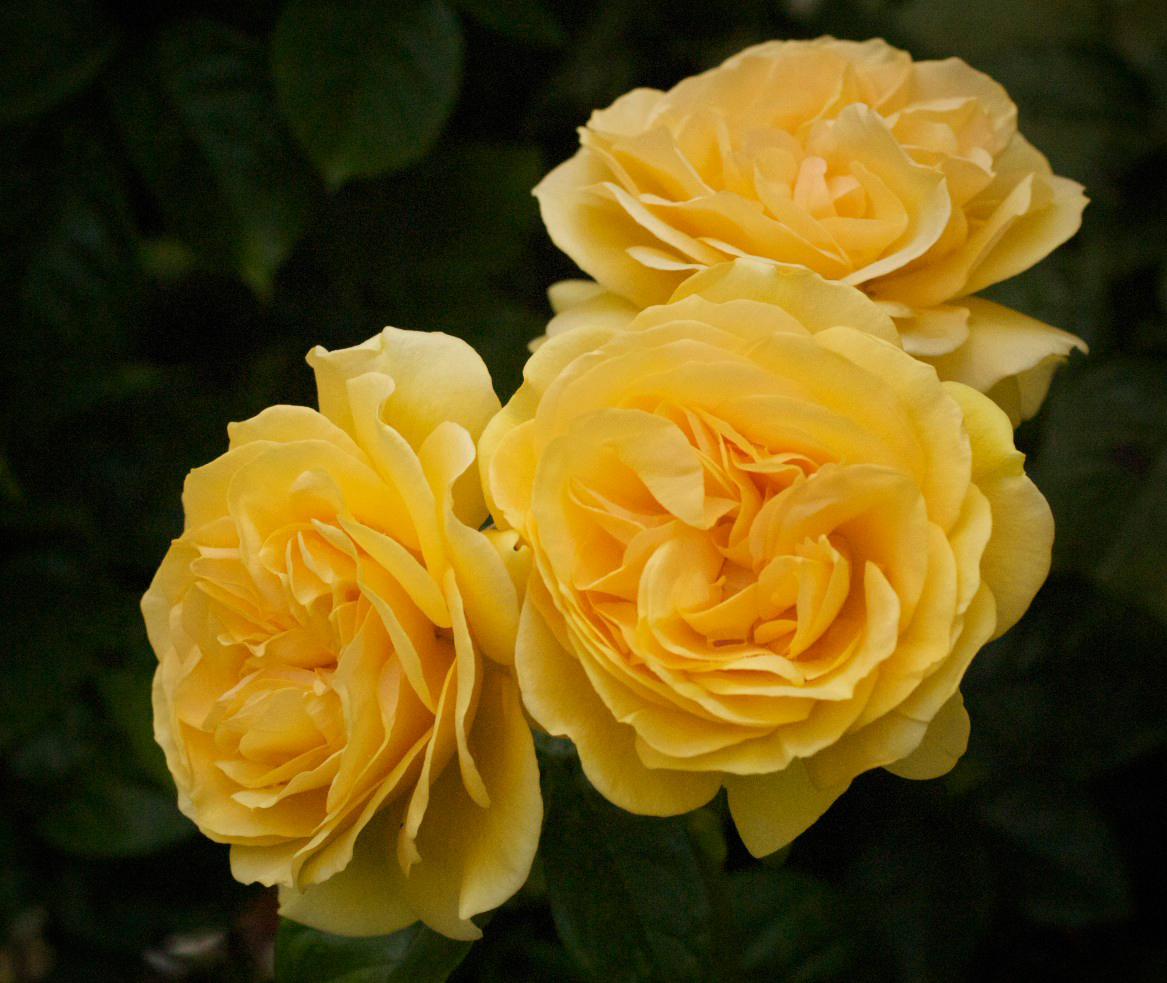
Yellow Rose, (solar plexus and crown chakras) The photo is of Julia Child floribunda roses from my garden.
- for acceptance, interpersonal connections, calming the mind, and bringing calm, engendering joy. (1)
- it can teach us how to recognize and express truth. (3)
- cultivating calm, peace, and joy; and concentration (4)
- associated with Archangels Haniel and Uriel (4)
- associated with Archangel Jophiel (5)
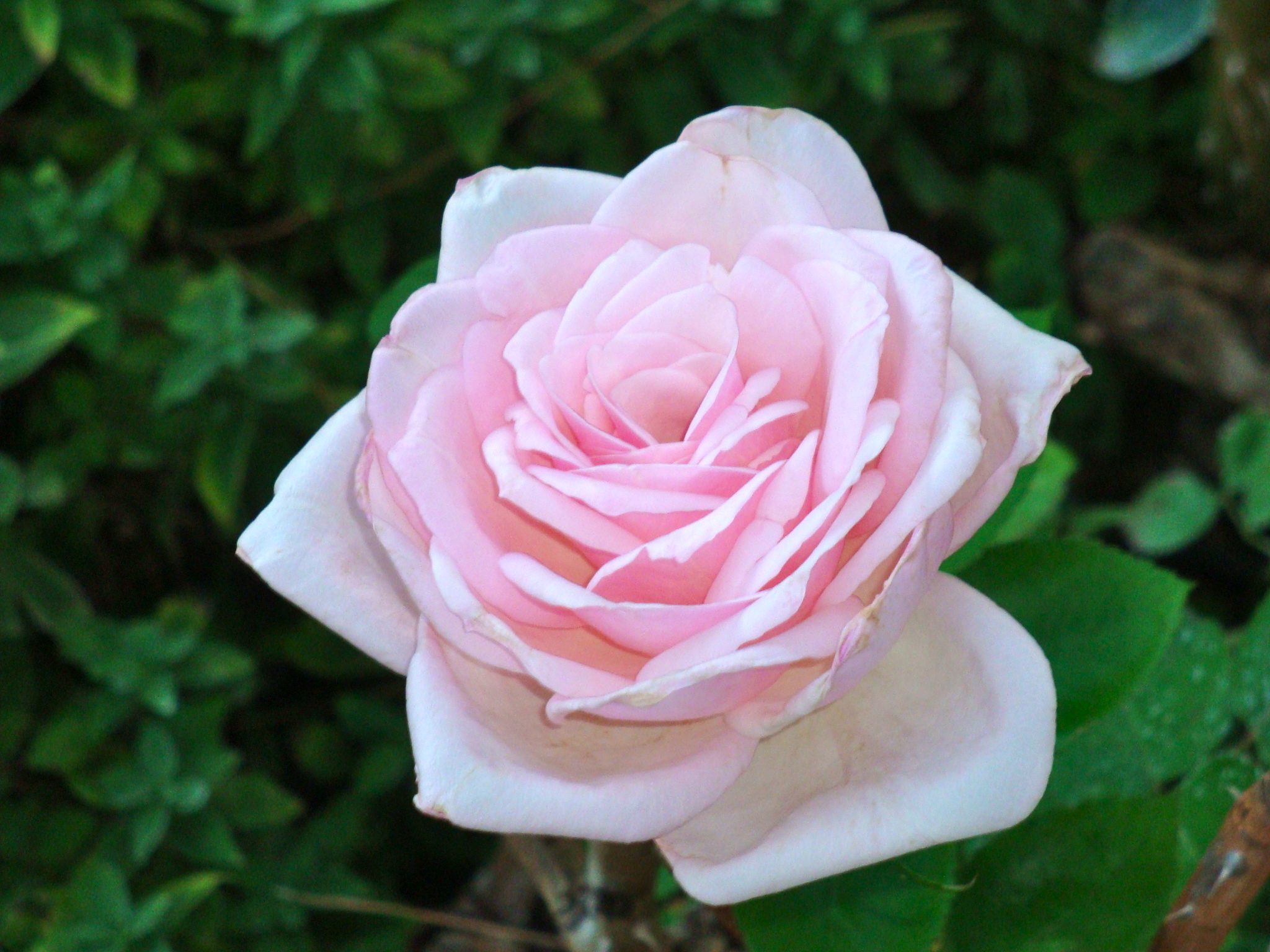

Pink Rose (heart and solar plexus chakras) Photos are of a pink hybrid tea rose (top) and Kimberlina floribunda roses (bottom) in my garden.
- for self-love and acceptance, releasing heart pain and trauma. (1)
- symbol of the blending of the male and female within to give new birth and creation to one’s life. (3)
- beauty, self-confidence, comfort, and being content with yourself (4)
- Bach Wild Rose flower essence, pink or white has healing qualities of will to live, joy and commitment to life despite trials or pain.
- FES California Wild Rose has the healing qualities of love for the Earth and for human life, enthusiasm for doing and serving.
- associated with Archangel Jophiel (4)
- associated with Archangel Chamuel (5)
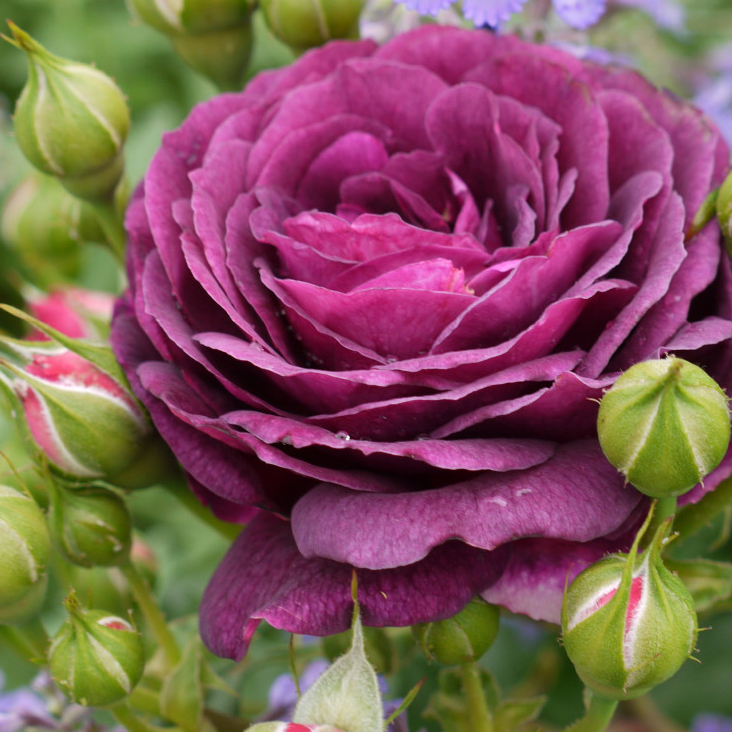 (Blue) Purple Roses, (throat chakra) (There is no such thing as a blue rose, but purple roses carry the blue vibration.) I do not have a rose this color in my garden, but it is on my wish list. This photo is of an Ebb Tide floribunda rose courtesy of plantworld.net.
(Blue) Purple Roses, (throat chakra) (There is no such thing as a blue rose, but purple roses carry the blue vibration.) I do not have a rose this color in my garden, but it is on my wish list. This photo is of an Ebb Tide floribunda rose courtesy of plantworld.net.
- for inspiration and creative self-expression. (1)
- it opens one to the energy that makes the impossible possible and the unobtainable obtainable. (3)
- associated with Archangel Michael (5)

Violet/Lavender Rose, (crown chakra) Photo is of a Blue Moon hybrid tea rose in my garden.
- for deepening spiritual vision and intuition (1)
- associated with Archangel Zadkiel (5)

White Rose, (crown chakra and soul star chakra above the top of the head) Photo is of a Green Ice mini rose which I have in my garden but am lacking her photo. She is currently resting up before blooming again so the photo you see is Green Ice mini rose courtesy of Rose Show.com
- for connecting with the divine and a sense of pure knowing (1)
- quietly inspiring and strengthening, renewing energy and joy in your life (2)
- given to infants and young children to help them grow up, keeping a sense of heaven on earth (2)
- symbol of the moon, helps develop spiritual purity and awaken our own divinity (3)
- purification, peace, gentle transition, releasing links from the past, and clearing earthbound spirits (4)
- Bach Wild Rose flower essence, pink or white has healing qualities of will to live, joy and commitment to life despite trials or pain
- associated with Archangels Metatron, Michael, and Raphael (4)
- associated with Archangel Gabriel (5)
Sources
1. “Rose Flower Essences: Loving Support Through Life’s Transitions” in Feb. 2003 Flower Essence Magazine.com by Tenanche Semiata-Akuaba.
2. Flower Power by Anne McIntyre
3. Nature – Speak by Ted Andrews
4. Flower Therapy: Welcome the Angels of Nature into Your Life by Doreen Virtue and Robert Reeves.
5. Website Mini Guide to the 7 Archangels (no longer available)


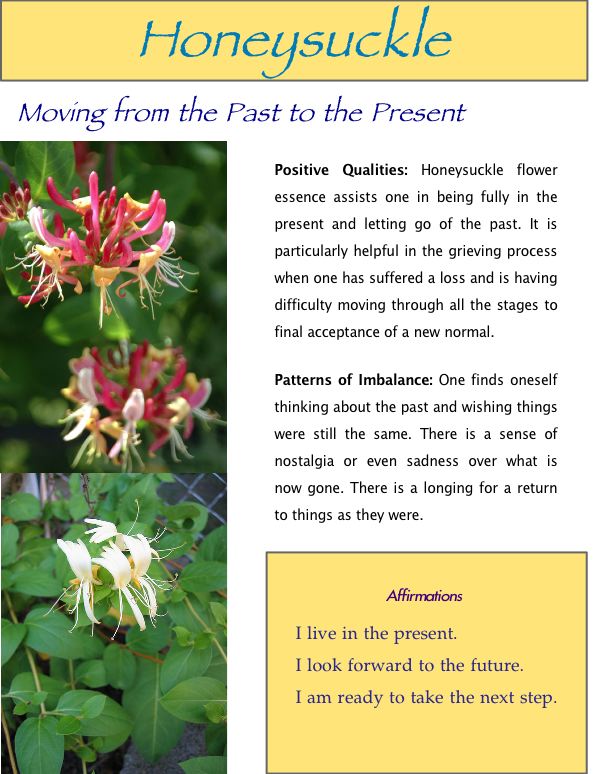

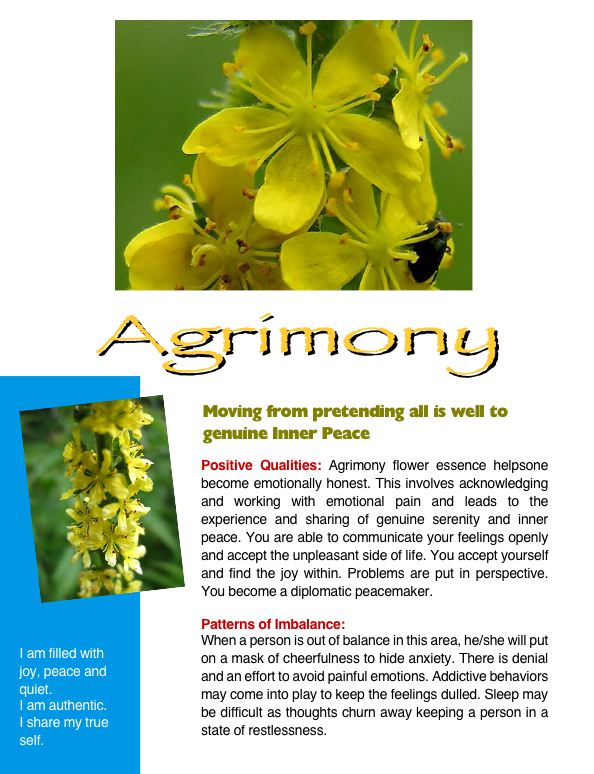



















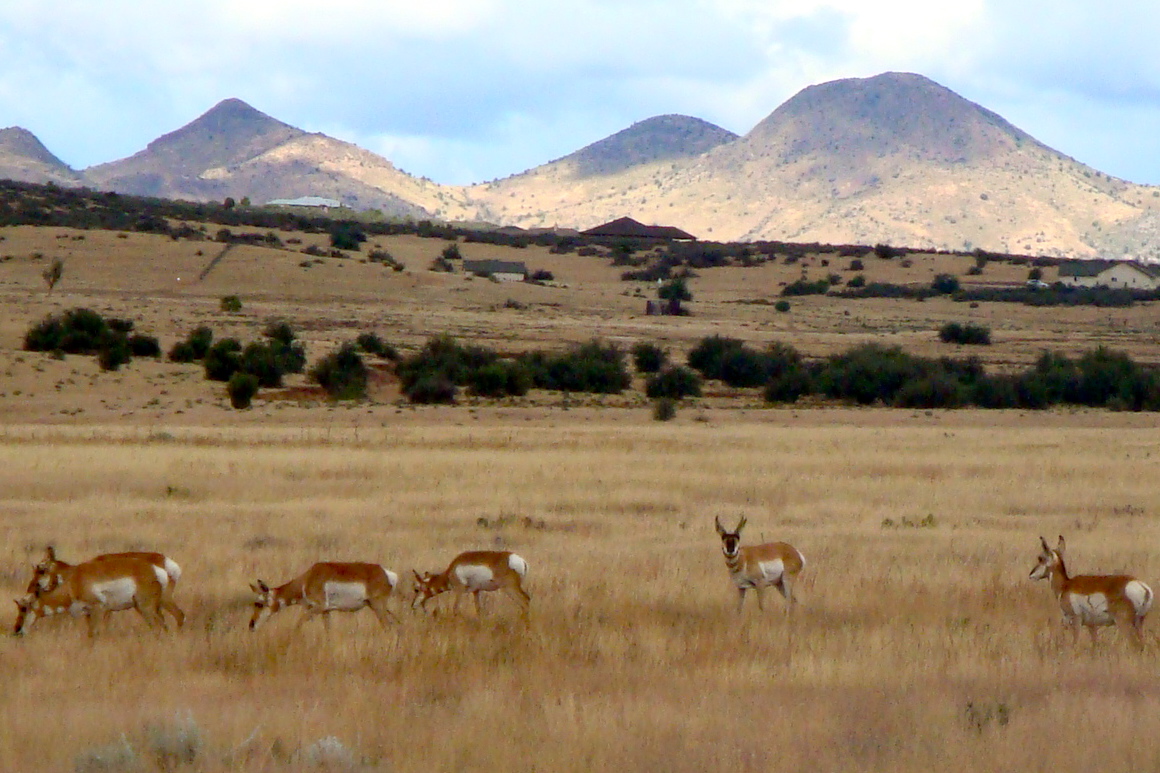 When I moved to Arizona in the mid 1980’s a frequent sight when traveling over the mountain to Prescott or traveling down to Phoenix was herds of pronghorn antelope. Now almost thirty years later the sightings are less frequent. The open grasslands over the mountain in Prescott are part of Prescott Valley and homes have been built and the highway expanded. I was thrilled to take the picture you see in this posting when showing my brother the sights last October. The high grasslands on the way to Phoenix have herds of cattle from time to time but I no longer spot antelope. I count myself lucky to have the contact with them that I do.
When I moved to Arizona in the mid 1980’s a frequent sight when traveling over the mountain to Prescott or traveling down to Phoenix was herds of pronghorn antelope. Now almost thirty years later the sightings are less frequent. The open grasslands over the mountain in Prescott are part of Prescott Valley and homes have been built and the highway expanded. I was thrilled to take the picture you see in this posting when showing my brother the sights last October. The high grasslands on the way to Phoenix have herds of cattle from time to time but I no longer spot antelope. I count myself lucky to have the contact with them that I do.